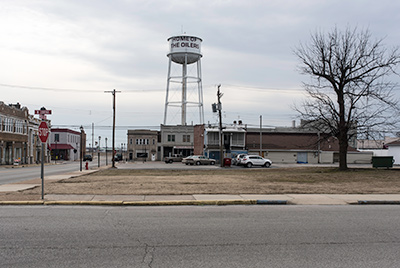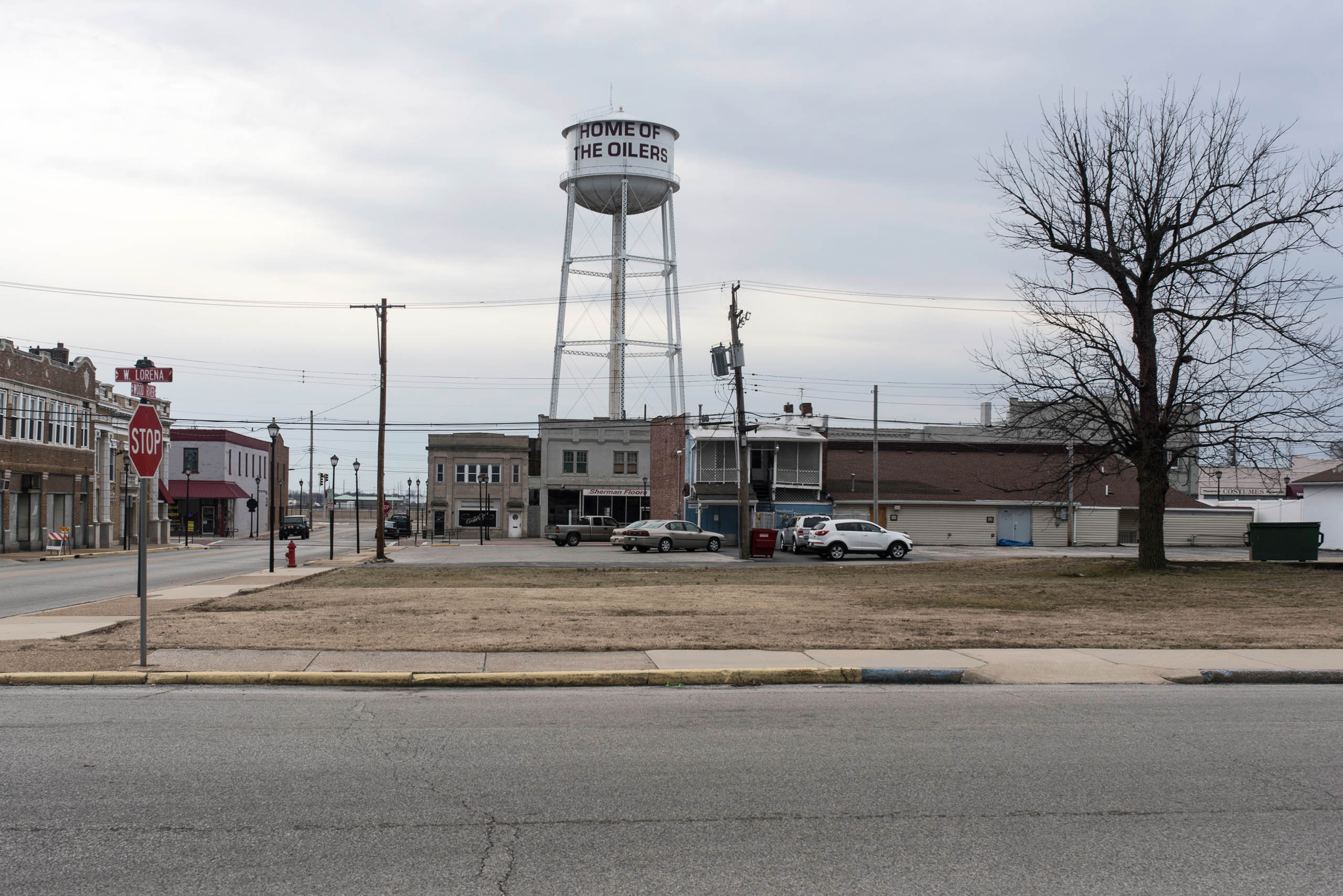



In 1920, Wood River came to national attention when the Census named it the fastest growing community in the country—a position that prompted the American Builder Magazine to name it “The Miracle City.” Experiencing a growth rate of over 4000%, the history of this town has from its beginning been intimately tied to the development the adjacent refinery. Originally built by Standard Oil Company in 1907 (at the time the largest corporation in the world) the refinery and associate town developed and grew in mutually affirming cycles. Early photographs and descriptions of Wood River show a settlement more akin to the mining-camps of the west than the municipal aspirations of most Midwestern towns. With tents, clapboard buildings, and muddy tracks as streets, Wood River began as little more than an unchoreographed clustering of industry and workers. From this early settlement the community of Benbow City emerged. Mostly catering to the more profane aspects of labor concentration, this ‘city’ was primarily a clustering of taverns, brothels, and gaming houses that catered to the rapid influx of workers to the area. While Benbow City cannot be counted as a direct instrument of Standard Oil, it was nonetheless a symptom of the rapid growth in the area and stood in material contrast to the more orderly city of Wood River that was growing up adjacent. In a telling anecdote, speaking to both the social and regulatory divisions between these two communities, a duel was fought between two policemen of the rival towns, each standing in their respective towns straddling the boundary, in which the officer from Benbow was killed. Later, following a large flood in 1915 that all but destroyed Benbow City, Standard Oil bought the site of Benbow, tore down all remaining buildings, and fenced off the area. Throughout the second and third decades of the 20th century, nearly 90% of the city population worked for the refinery. As the city and the company grew, so too did the need for housing workers. By 1918, this acceleration of growth led Shell put in the largest order for Sears Mail Order Homes every received—numbering over 200 homes across their three southern Illinois sites in an order worth over $1 million. In a letter to the construction firm tasked with building and erecting these homes, a company representative writes: The two hundred (200) houses which you built for us a Carlinville, Wood River and Schoper, Illinois are now completed and are entirely satisfactory in every detail. The workmanship, laying out of streets, sidewalks, sewers, etc., has all been handled in a very satisfactory manner, and the quality of the material is exceptionally good. We are proud of the architectural appearance also the convenient arrangement of rooms in these houses, and we are able to offer these houses to our workmen at very low prices. We can see here the comprehensive nature of this sort of city building, with the entire suite of urban infrastructure—from streets to sewers to sidewalks to housing—carried out by a single entity at the behest of a central industrial and landed interest. City, housing, and industry were organized, planned, and carried out by a central agency. To this day, south of Madison Ave, on 9th through 12th Streets in Wood River, is one of the densest clustering of mail order homes in the country—with models ranging from the feature-filled “The Fullerton” to the more modest “The Roanoke,” “The Carlin”,” The Elsmore”, and “The Madelia.” Alongside this infrastructure of inhabitation, Standard Oil also invested in numerous civic amenities throughout the city—with schools, municipal clubs, and parks all bankrolled by Standard. Of particular interest, and point of local pride for many decades, was the city park built on the North side of town. Opened July 4, 1926, this park was soon to be home to the Country’s largest swimming pool. At 300’x200’, and 1.32 million gallons, the pool was the largest in the country and was built by Standard Oil for some $100,000. Opening day initiated what would become the annual Mermaid Beauty Contest. Today, Wood River remains an active riverbend community—with a full suite of primary schools, a bustling central library, and an active and well-curated museum and historical society. Though the site of the original refinery closed in 1980, production in adjacent facilities continues to mark this part of the floodplain as a distinct refinery landscape. The 840-acre site of the former refinery was one of five national sites targeted in 2002 to pilot a project that would transition former refinery brownfield sites to new uses—office, retail, and recreation. Though slow to start, the community recently completed a new police headquarters on this site and remediation continues in other sectors. The Wood River high school mascot is The Oilers.